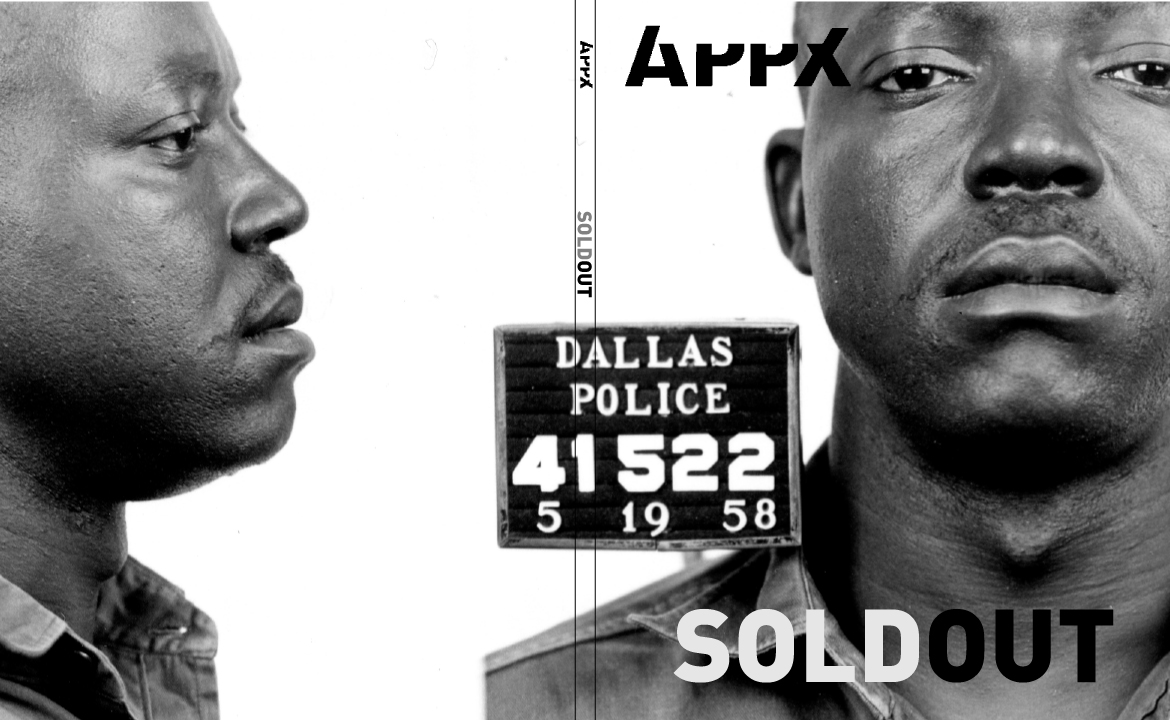
FAYETTEVILLE, ARK. — A mug shot of a black man is a gutsy choice for the cover of Appx, a new journal that examines architecture and other creative disciplines through the lens of race. Darell Fields, the journal’s editor and an associate professor of architecture at the University of Arkansas, chose the image in part because “I could be in jail as easily as anywhere else. I’m more likely to be in jail, statistically speaking,” he said.
Instead, Fields has beaten the dismal odds for black men to join the vanishing small number of African Americans who practice architecture in the United States. (There are 1,558 black licensed architects in the United States, about 1.5 percent of the nation’s total, according to data from the National Council of Architectural Registration Boards and the University of Cincinnati Center for the Study of Practice.)
Appx builds on Fields’ earlier scholarly work — a journal, dissertation and book completed at Harvard University — that blew open the hermetic world of architectural criticism with an entirely new racial perspective on the field.
Take, for example, the first article, “Kant, Formalism and the Latent Anthropology of Race” by Charles Davis, a doctoral student at the University of Pennsylvania School of Design. Laced with inflammatory pull quotes, including one in which Kant equates dark skin color with diminished intellectual ability, to take an especially egregious example, the article questions the deployment of Kant’s philosophy without the racial underpinnings of his anthropological work
“Can anyone talk about Kant in a serious way without addressing his anthropological treatises? Kant himself states you can’t divide the body of work,” Fields said.
The theme of racially driven anomaly also surfaces in an essay on the early-20th century Viennese architect Adolf Loos by Caroline Constant, a professor of architecture at the University of Michigan. While most of Loos’ work was characterized by restrained ornamentation, whitewashed facades and simple geometric forms, his theoretical design for Josephine Baker’s Parisian townhouse featured a boldly striped façade and a second floor pool surrounded by windows promoting visual access to the swimmer’s body. Constant places the work in context and explores Loos’ conflicted attitudes toward women by comparing the Baker house with two other domestic interiors designed for female clients.
Paul Kelsch’s article “Cultivating Community: On African Americans, Nature and Landscape Architecture” draws on oral history narratives to discuss how the black diaspora weakened traditional ties to the land and current attempts to cultivate community through urban garden programs. Kelsch is an assistant professor of landscape architecture at Morgan State University in Baltimore, Md.
Two full-color portfolios round out the first issue of Appx. Kristin Musgnug’s eerily silent mini-golf scenes and other domestic landscapes nicely complement Kelsch’s article. Musgnug is a professor of art at the University of Arkansas and is represented by the Inman Gallery in Houston. A site guide to African American churches in the Sweet Auburn area of downtown Atlanta, written by Atlanta architect Margaret Fletcher and illustrated by photographs by Reed Simonds, completes the journal with a straightforward documentation of richly varied architectural form.
Fields is pleased with the mix of substantial yet readable articles and eye-catching visuals.
“As a compilation these articles demonstrate that race as an aesthetic principle is a very fruitful way to pursue scholarship in any number of venues,” he said.
Add comic books to the list: Fields is already at work on an article for the next issue that will analyze DC Comics superhero narratives from the 60s and 70s.
“It’s so refreshing,” he said, gesturing at a cover showing the Green Lantern (black) vs. the Green Lantern (white) facing off. “There’s racial theory, and it’s right there.”
The journal’s contributors range from emerging scholars to well-established critics and artists. Not all of them are African American, which Fields views as a plus.
“For the race issue to become truly innovative, we have to get beyond the notion that blackness can only be comprehended as a closed racial experience. Blackness, in fact, is a comprehensive aesthetic methodology,” he said.
In addition to his teaching and scholarly work, Fields has developed a prefabricated housing system that offers sleek customizable housing at spec house prices. To bring costs even lower, he is also pursuing patents for innovative new building components. Fields received his Bachelor of Science in architecture from the University of Texas at Arlington. He earned a master’s degree from the Graduate School of Design and a doctoral degree from the Graduate School of Arts and Sciences, both at Harvard University. He taught at Harvard and Northeastern University before joining the University of Arkansas School of Architecture faculty in 2005. Fields has won awards in numerous national and international design competitions and has initiated and participated in projects in Dallas, New York, Boston and Tokyo.
Appx is published annually and distributed by the University of Arkansas Press. For more information visit http://architecture.uark.edu/apx.html.
Contacts
Darell Fields,
associate professor of architecture
School of
Architecture
(617) 413-2574, dwfields@uark.edu
Kendall Curlee,
director of communications
School of
Architecture
(479) 575-4704, kcurlee@uark.edu
